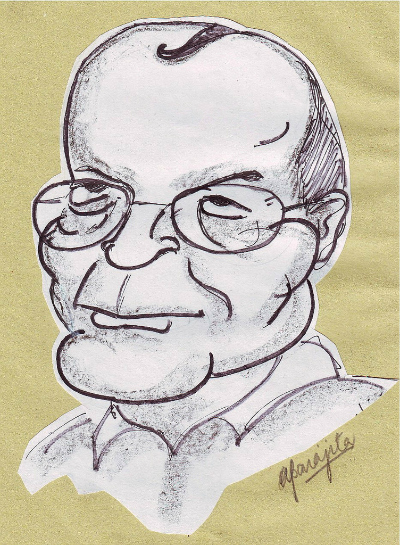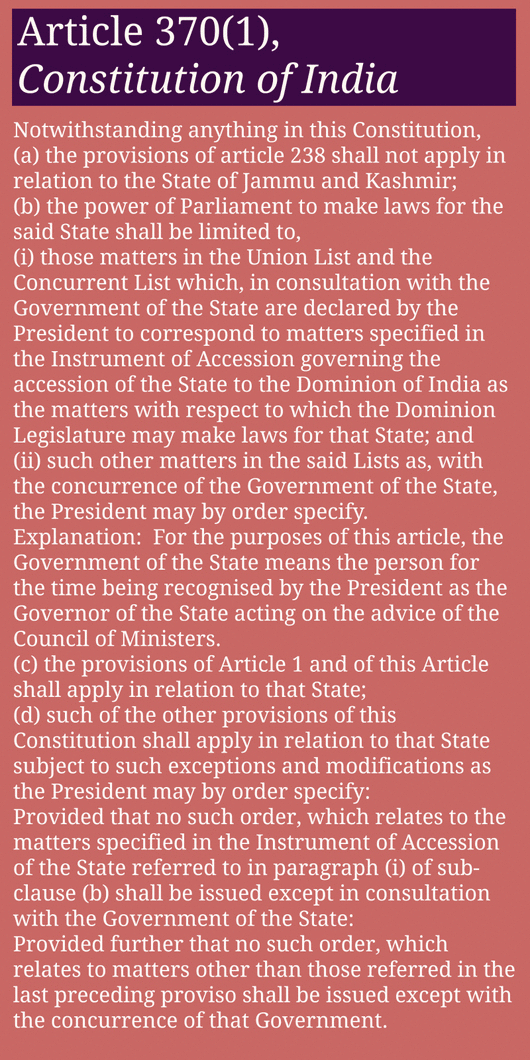 The Constitution (One Hundred and Twenty Second Amendment) Bill, 2014 (“Bill”) seeks to introduce the goods and services tax (“GST”) by conferring concurrent taxing powers on the Union and state governments on every transaction involving the supply of goods or the supply of services or both. It would immediately allow the Union to levy tax on the sale of goods which has been in the domain of the states, and the states similarly would be able to levy tax on services which until now was mostly in the domain of the Union government.
The Constitution (One Hundred and Twenty Second Amendment) Bill, 2014 (“Bill”) seeks to introduce the goods and services tax (“GST”) by conferring concurrent taxing powers on the Union and state governments on every transaction involving the supply of goods or the supply of services or both. It would immediately allow the Union to levy tax on the sale of goods which has been in the domain of the states, and the states similarly would be able to levy tax on services which until now was mostly in the domain of the Union government.
The introduction of the GST in this manner would, without doubt, be the most widespread restructuring of India’s indirect taxation system, which currently involves a multiplicity of taxes as well as cascading effects.
Removal of cascading effects
For instance, the central excise duty component suffered by goods during the manufacturing process and the additional excise duty component on imported goods are included in the value of the goods when the states levy value added tax (“VAT”). The Bill seeks to subsume various central indirect taxes and levies such as central excise duty, additional excise duties, additional customs duty, special additional duty of customs, service tax, and surcharges and cesses in relation to the supply of goods and services. The Bill also simultaneously provides for the subsuming of value added tax or sales tax, entertainment tax, central sales tax, octroi or entry tax, purchase tax, luxury tax, taxes on lottery, betting and gambling, and state cesses and surcharges imposed by the states in relation to the supply of goods and services. The removal of these various taxes and the introduction of a single point GST will thus remove the cascading effect of taxes and also simplify the number of taxes that are levied on a transaction involving goods or services. While the current scheme of the Central Excise Act, 1944 and the Finance Act, 1994 provided for the removal of the cascading effect of taxes in respect of certain central indirect taxes, and the VAT system introduced in states provided for the removal of the cascading effect in respect of tax on the sale of goods, the GST will be the first time that the cascading effect will stand removed in respect of both central and state indirect taxes. The GST, therefore, can be seen as a logical step for having an indirect tax system that seeks to capture only the value addition in the goods and services at each level, and not capture the taxes being levied at each level for the purposes of further taxation.
Types of GST taxes
To implement GST, the Bill proposes the introduction of Article 246A into the Constitution – a non obstante clause that provides that the Parliament, and with the exception of tax on the supply of goods and services in the course of inter-state trade or commerce, the states shall have the power to make laws with respect to goods and services tax to be imposed by the Union or by the states. Keeping in mind the federal structure, the Union and the states will levy the GST at each point of time in the taxation of goods and services, with the Union levying a central goods and services tax (“CGST”) and the states levying a state goods and services tax (“SGST”).

The Union Finance Minister Arun Jaitley introduced the constitutional amendment bill on the goods and services tax in the Lok Sabha on December 19, 2014.
The Bill also proposes an amendment to Article 286 of the Constitution to ensure that the supply of goods and services continues to remain outside the purview of the states’ power to tax if such supply takes place outside the state or in the course of import of goods into India or the export of goods outside India. However, this amendment is merely clarificatory. The substance and the intention of the provision continues to remain the same. Equally important is the amendment proposed to Article 248. The exclusive power of the Parliament to make any law with respect to any matter not enumerated in the Concurrent List or the State List in Schedule VII, including the imposition of tax on such matters, will now be subject to Article 246A. This essentially means that any new matters involving goods or services, including their taxes, will necessarily have to be routed by the Union through the mechanism of the GST; and thereby necessarily enabling the states to tax such matters as well.
Additionally, Article 246A(2) empowers the Parliament with the exclusive power to make laws with respect to goods and services tax where the supply of goods, or of services, or both takes place in the course of inter-state trade or commerce. This tax is called the integrated goods and services tax (“IGST”). Hence, every point in taxation will necessarily be subject to CGST, and either SGST or IGST, depending on whether the movement of goods or supply of services involves intra-state or inter-state trade or commerce. Under the proposed Article 269A, the IGST should be levied and collected by the Union but be apportioned between the Union and the States.
The additional tax – a wrong move
The manner of taxation on products such as alcohol and petroleum under the GST mechanism has been a point of disagreement between the Union and the states because of the amount of revenue generated by the states in taxing these products. The Bill has sought to address this issue and keep the states happy by keeping the taxation of alcohol and petroleum outside the purview of GST altogether. This essentially means that the states will continue to tax the sale of alcohol and petroleum under its existing state excise and sale tax laws. Additionally, to address the long standing (but slightly unjustified) concerns of revenue loss to the states, the Bill proposes an additional tax not exceeding 1 per cent on the supply of goods in the course of inter-state trade or commerce to be levied and collected by the Union Government for a period of at least two years, but assigned to the states from where the supply of goods originates. However, since this 1 per cent additional tax is intended to be collected in addition to the IGST under Article 269A, it appears that this 1 per cent additional tax falls outside the purview of the GST framework altogether; else, it could have been specifically incorporated into Article 269A itself.
This is an incorrect move under the Bill and the intention of simplifying the tax net will be partially lost if certain taxes are proposed to be kept outside the GST scheme. Further, if the 1 per cent additional tax is kept outside the GST scheme, then the assessees will not be able to avail credit of the 1 per cent additional tax being paid on the supply of goods in the course of inter-state trade or commerce; and this will become a cost that will eventually be passed on to the end customers.
The council
A commendable and necessary but tricky insertion in the Bill is the creation of the GST Council under the proposed Article 279A of the Constitution. The GST Council is intended to be an all-powerful body comprising the Union Finance Minister, the Union Minister of State for Finance, and the State Finance Minister of each state government to formulate principles and make recommendations on the following aspects of the GST:
(a) the rates, including floor rates with bands of GST;
(b) the goods and services that may be subjected to, or exempted from GST;
(c) model goods and services tax laws for adoption by the Union and the states and principles for the levy and apportionment of IGST;
(d) the threshold limit of turnover below which goods and services may be exempted from GST;
(e) special provisions with respect to the North Eastern States, Jammu and Kashmir, Himachal Pradesh and Uttarakhand; and
(f) any other matter relating to GST, as the GST Council may decide.
 Having a GST Council of this nature will ensure greater coordination between the Union and states and among states. While the decisions of the GST Council are intended to be binding on the Union and the states, the principal issue here is the extent to which the model GST Law will be binding on and be implemented by the states. If one or more states, for instance, decide to make even procedural changes while adopting and enacting the model GST Law, then one of the purposes of GST – the benefit of uniformity – will be lost on the assessees; not to mention, give rise to much confusion among the assessees who are subject to taxation in multiple states. Secondly, instead of providing floor rates and bands of GST, it would have been advisable that the Bill provided for a fixed rate of taxation under the GST (subject to certain exemptions and abatements, of course). Providing for flexibility in terms of the rates that can be charged as SGST could potentially become the subject matter of much confusion in the hands of the assessees, not to mention a whole lot of business structuring and restructuring around taxation. At the same time, this proposal could lead to a healthy competition between the states and could result in SGST being charged only at the floor rates in the long run. The third and most important issue could arise not with the model GST law itself, but with its implementation. Would an issue under the SGST raised by a state government in respect of an assessee also become an issue under the CGST to be taken note of by the Union government, and vice-versa? What happens if there is a difference of opinion between the CGST authorities and SGST authorities in respect of the same issue involving the same assessee? Can proceedings be commenced only under CGST or only under SGST, or do they necessarily have to be clubbed? Which authorities get jurisdiction over the matter? Does an assessee have to respond to dual proceedings under CGST and SGST in respect of the same cause of action? While one does not expect the Bill to address these issues naturally, one hopes that the model GST law clearly enunciates and addresses such issues; and the GST Council ensures that little or no modifications are made by the states while enacting the model GST law.
Having a GST Council of this nature will ensure greater coordination between the Union and states and among states. While the decisions of the GST Council are intended to be binding on the Union and the states, the principal issue here is the extent to which the model GST Law will be binding on and be implemented by the states. If one or more states, for instance, decide to make even procedural changes while adopting and enacting the model GST Law, then one of the purposes of GST – the benefit of uniformity – will be lost on the assessees; not to mention, give rise to much confusion among the assessees who are subject to taxation in multiple states. Secondly, instead of providing floor rates and bands of GST, it would have been advisable that the Bill provided for a fixed rate of taxation under the GST (subject to certain exemptions and abatements, of course). Providing for flexibility in terms of the rates that can be charged as SGST could potentially become the subject matter of much confusion in the hands of the assessees, not to mention a whole lot of business structuring and restructuring around taxation. At the same time, this proposal could lead to a healthy competition between the states and could result in SGST being charged only at the floor rates in the long run. The third and most important issue could arise not with the model GST law itself, but with its implementation. Would an issue under the SGST raised by a state government in respect of an assessee also become an issue under the CGST to be taken note of by the Union government, and vice-versa? What happens if there is a difference of opinion between the CGST authorities and SGST authorities in respect of the same issue involving the same assessee? Can proceedings be commenced only under CGST or only under SGST, or do they necessarily have to be clubbed? Which authorities get jurisdiction over the matter? Does an assessee have to respond to dual proceedings under CGST and SGST in respect of the same cause of action? While one does not expect the Bill to address these issues naturally, one hopes that the model GST law clearly enunciates and addresses such issues; and the GST Council ensures that little or no modifications are made by the states while enacting the model GST law.
Interesting in itself is the mode of decision-making by the GST Council, which has been provided in Article 279A(9). Every decision of the GST Council shall be taken by a majority of not less than three-fourths of the weighted votes of the members present and voting: (A) the vote of the Union government shall have a weightage of one-third of the total votes cast, and (B) the votes of all the state governments taken together shall have a weightage of two-thirds of the total votes cast in that meeting. One wonders how the states acceded to a situation wherein the Union government has a weightage of one-third of the votes cast. And given the current political map of India, this could result in a situation where the majority group at the Union government has complete control over the decision making process of the GST Council.
Concluding step in indirect tax reform
The introduction of the GST is the concluding step in the reformation of the indirect tax system in India. From an assessee and government point of view, GST enables ease of compliance, transparency on the exact amount of tax being suffered by goods and services, and ease of administration. From the perspective of the end consumer, the removal of the cascading effect of taxes will result in an immediate reduction on the overall tax burden on goods and services; and it is hoped that this reduction in the tax burden will in turn help bring down the cost of goods and services, moving ahead.
The Union government has repeatedly said that it intends to rollout the GST with effect from April 1, 2016. Hence, it is unlikely that the Central Government will undertake any major tinkering with the scheme of indirect taxation in the forthcoming Union Budget, especially considering that the it also intends to introduce the Bill in this budget session of the Parliament. Having said that, the forthcoming Union Budget can actually be utilised as a good opportunity to merge certain lesser avenues of taxation into the central excise and services taxes and also do away with a several cesses that form the body of central indirect taxation. Additionally, procedural compliances can be simplified and brought closer to a format that the Union government intends to adopt for compliances under the CGST. Doing so will not only ease the road for the introduction of the GST in its intended form, but also provide assessees a full twelve months to get accustomed to the compliance processes.
Gautham Gururaj is an advocate based in Bangalore.





